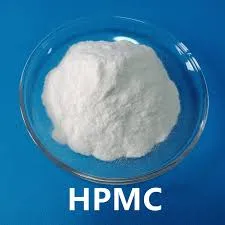
Aug . 07, 2024 17:55 Back to list
Exploring the Solubility of HPMC in Various Organic Solvents for Enhanced Formulation Development
Solubility of HPMC in Organic Solvents An Overview
Hydroxypropyl methylcellulose (HPMC) is a cellulose-derived polymer extensively utilized in various applications, including pharmaceuticals, food products, and construction materials. Its versatility stems from its unique properties, such as solubility in water and a range of organic solvents. Understanding the solubility of HPMC in organic solvents is crucial for optimizing its applications and enhancing product performance.
Solubility of HPMC in Organic Solvents An Overview
When assessing HPMC’s solubility in organic solvents, one must consider the nature of the solvent itself. HPMC generally exhibits poor solubility in non-polar solvents such as hexane and toluene. These solvents lack the ability to disrupt the extensive hydrogen bonding network created by the hydroxyl groups on the HPMC molecule. In contrast, HPMC shows better solubility in polar organic solvents that can solvate the polymer effectively. Solvents such as ethanol, isopropanol, and acetone are more suitable for dissolving HPMC due to their ability to interact favorably with the hydrophilic segments of the polymer.
hpmc solubility in organic solvents

The solubility of HPMC in organic solvents can also be influenced by the temperature and concentration of the solution. Higher temperatures generally increase the solubility of HPMC in polar organic solvents, as the kinetic energy supplied to the molecules helps to overcome the enthalpic barriers associated with dissolution. Furthermore, higher concentrations of HPMC can lead to viscous solutions, which may result in decreased solubility due to intermolecular interactions. Therefore, an optimal balance of temperature and concentration is important for achieving the desired solubility.
In industrial applications, the solubility of HPMC in organic solvents is significant for formulations that require rapid dispersion and uniform mixing. For instance, in the pharmaceutical industry, HPMC is often utilized as a binder in tablets or as a thickening agent in gels. Employing organic solvents that solubilize HPMC effectively ensures that the active pharmaceutical ingredients are uniformly dispersed, enhancing bioavailability and product stability. Additionally, in food applications, HPMC contributes to texture and consistency, and its adaptability in various solvents allows for diverse formulations.
The study of HPMC solubility in organic solvents not only provides insights into its practical applications but also encourages further research on modification strategies to enhance its solubility profile. Researchers are exploring the synthesis of novel HPMC derivatives that possess improved solubility in a broader range of organic solvents, which could expand its application spectrum. For example, variations in the degree of substitution or the introduction of additional functional groups may enhance solubility and performance.
In conclusion, the solubility of HPMC in organic solvents is a critical factor that influences its application across a variety of industries. By understanding the interactions between HPMC and different solvents, manufacturers can optimize formulations to achieve desired properties and enhance efficacy. As research in this area continues to evolve, the potential for novel applications and improved HPMC derivatives may significantly impact fields ranging from pharmaceutics to food technology, underscoring the importance of solubility studies in polymer science.
-
Versatile Hpmc Uses in Different Industries
NewsJun.19,2025
-
Redispersible Powder's Role in Enhancing Durability of Construction Products
NewsJun.19,2025
-
Hydroxyethyl Cellulose Applications Driving Green Industrial Processes
NewsJun.19,2025
-
Exploring Different Redispersible Polymer Powder
NewsJun.19,2025
-
Choosing the Right Mortar Bonding Agent
NewsJun.19,2025
-
Applications and Significance of China Hpmc in Modern Industries
NewsJun.19,2025







